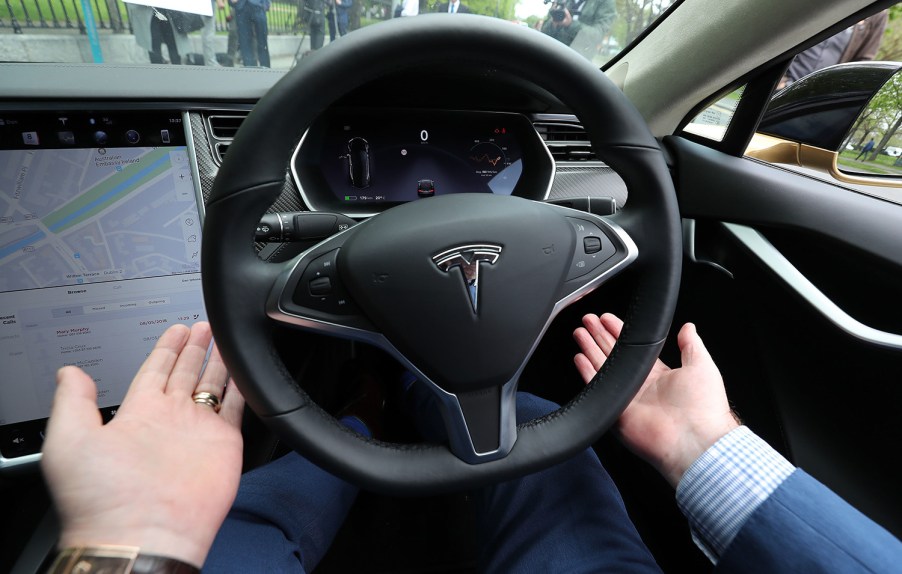
Are Self-Driving Cars Doing More Harm Than Good in Early Stages?
The concept of self-driving cars is both exciting and terrifying. Whether or not it’s a safe concept is still up in the air in most people’s minds. However, despite vehicle manufacturers being adamant that it is safe, only time will tell. That begs the question, then. Is using public roadways as a testbed a good idea?
Even with self-driving cars, human error could still be problematic

According to Axios, implementing self-driving cars could result in cars getting more dangerous before they get safer. Interestingly enough, though, the primary reason for that is not because of underdeveloped technology or flaws. Instead, it again falls on the same cause for most car accidents today; humans.
The biggest issue with these self-driving systems is the fact that they aren’t fully self-driving yet. Unfortunately, it seems like many people who own these cars don’t quite grasp that concept. All vehicles currently available with self-driving technology require drivers to be alert and behind the wheel. Most will disable the self-driving system if the car does not detect minor driver input of the steering wheel.
Although treating your car’s autonomous features as if they’re an invisible chauffeur is entirely out of the question, it doesn’t stop some folks from doing it. There are plenty of videos of people taking naps and playing games while behind the wheel of Tesla vehicles on autopilot. One Tesla owner even sits in the back seat of his car and uses his feet to move the steering wheel occasionally. He’s been arrested and had his car impounded for his actions, but he simply bought another Tesla and did the same thing.
Another recurring issue is users failing to understand how to operate autonomous driving systems. According to AAA, some owners couldn’t fully master the use of their self-driving tech even after six months of ownership
The paradox of vehicle automation
As Axios put it, one of the most dangerous parts of self-driving tech is the paradox it creates. The more reliable the technology gets, the less prepared drivers will be for when it fails.
When you’re behind the wheel of a self-driving car, you’re not really a driver anymore. Instead, you’re a safety monitor. Under normal driving conditions, you’re actively looking for potential hazards and reacting to them. However, when autopilot systems are on, you’re monitoring the road for hazards and monitoring the system to ensure it responds to them. In some cases, it takes up to 40 seconds for a human driver to fully regain control of the vehicle.
Axios discussed the issue with Michael Nees, an engineering psychologist at Lafayette College.
“It’s amazing how far automated driving technology has come and how quickly, but even if it is 99% reliable, that 1% multiplied across millions of people and miles and miles of roads is going to result in a nontrivial number of incidents,” said Nees.
Ultimately, whether or not self-driving technology will make cars more dangerous before they’re safer will boil down to numbers. Sure, that one percent spanning millions of people will result in many accidents. The question is whether there will be more accidents than already occur. Additionally, other factors like the severity of the accidents step in, too. Perhaps the self-driving features may not stop an accident, but their safety features could prevent it from being devastating.
According to the IIHS, there were 33,244 crashes involving 51,247 motor vehicles in 2019 in the U.S. These crashes resulted in the death of 36,096 people. Perhaps self-driving may not reduce the number of crashes. Could it reduce the number of deaths, though?
Only time will tell how safe self-driving cars are
Ultimately, as autonomous driving car technology continues to develop and roll out on massive scales, the issues or benefits will become more apparent.
If self-driving cars could develop a way to both implement autonomous driving and ensure that the driver is alert and ready to take over if needed, they could very well result in a massive reduction of accidents on U.S. roadways. However, human error is bound to step in somewhere down the line. For now, all the world can do is wait and see.



